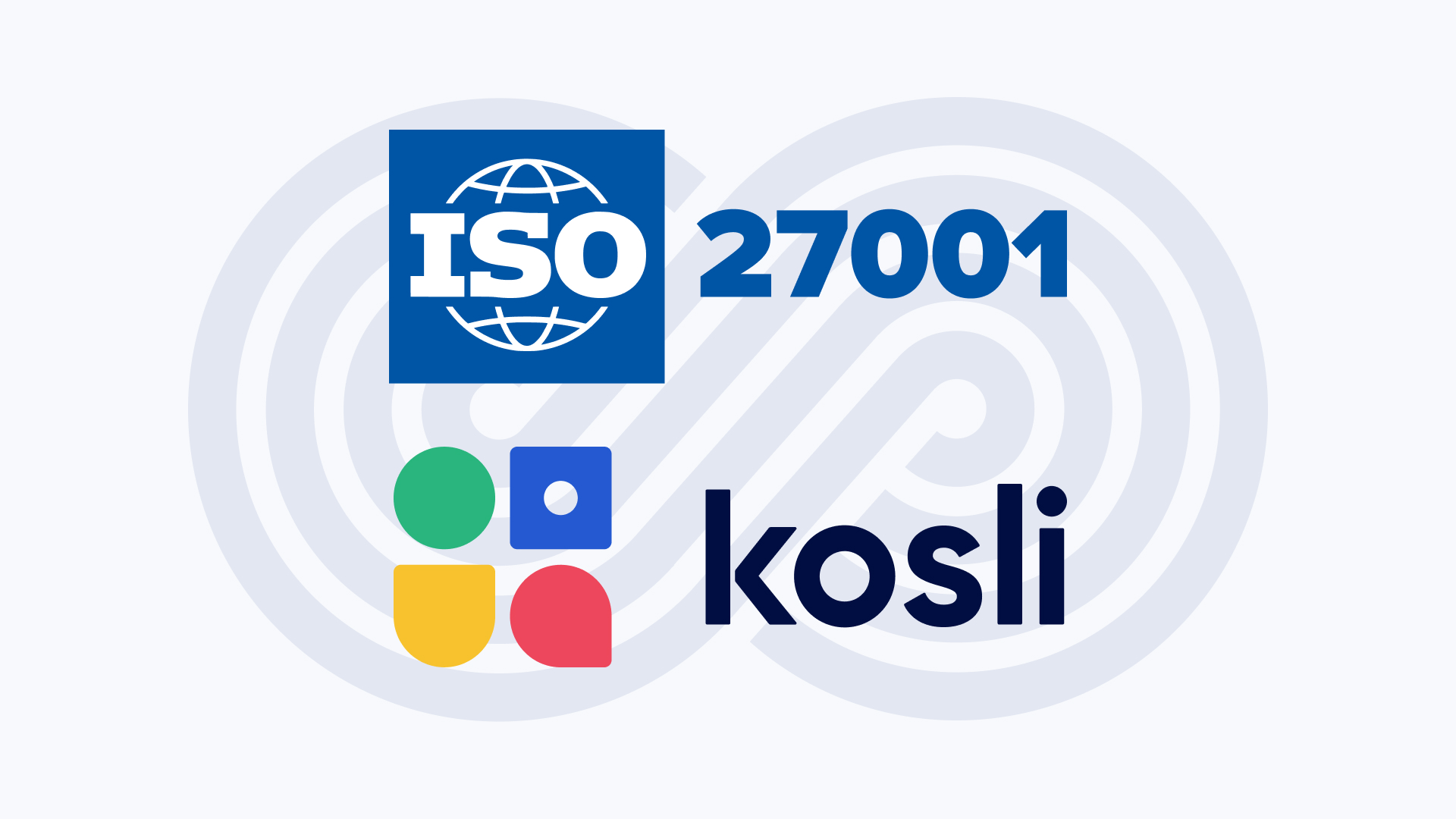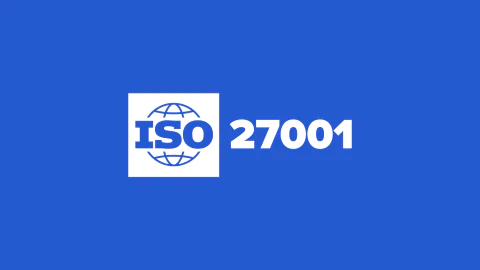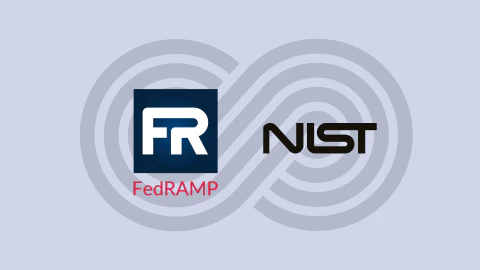Modern software delivery teams find themselves under constant pressure to maintain security and compliance without slowing down the speed of development. This usually means that they have to find a way of using automation to ensure robust governance processes that can adapt to evolving cyber threats and new regulatory requirements.
Achieving compliance with ISO 27001, an international standard for information security management, is one of the clearest ways for companies to signal that they take these issues seriously, and have adequate systems in place to guarantee security.
The increasing demand for ISO 27001 certification
Although ISO27001 is an opt-in standard, for increasing numbers of companies it’s basically a mandatory requirement due to the demands of their customers. In fact, a whole new category of SaaS tools like Drata and Vanta have emerged to help companies achieve ISO and SOC2 certifications.
In this article you’ll learn more about the importance of ISO 27001 and how it can improve the overall security posture of an organization. We’ll also cover the security audit process and steps for achieving ISO 27001 certification.
What is ISO 27001 Regulatory Compliance?
Data security has become essential, with new regulations like GDPR, HIPAA, and CCPA requiring organizations to protect their proprietary and personal data. ISO 27001 helps organizations meet these other regulatory requirements by outlining hundreds of controls and security mechanisms for keeping information security.
Since the data security and regulatory landscape continues to evolve to meet new cyberthreats, the ISO 27001 is constantly changing as well. Having strong security policies and controls in place ensures organizations are protected against current threats and can deal with new ones that emerge. By keeping up with the latest ISO 27001 best practices and conducting regular audits, organizations will be able to better manage their overall cyber risk.
What are the ISO 27001 Security Principles?
The ISO 27001 standard provides guidance for creating and maintaining an information security management system (ISMS). This includes controls and processes that are aimed at reducing any potential information security risks to acceptable levels.
The different types of ISO 27001 controls are:
- Organization: Defining rules, such as access control policies, to promote safe behavior.
- People: Providing education so that employees perform their activities securely.
- Physical: Implementing physical security measures like cameras and alarm systems.
- Technological: Adopting cybersecurity best practices, such as encryption and backups.
By implementing the guidelines of ISO 27001, organizations can improve their overall cyber resilience. The ISO 27001 certification process encourages organizations to evaluate their current security posture and make substantial upgrades to meet the international standard. This often includes adopting new security technologies that greatly enhance their cyber resilience well beyond the requirements of ISO 27001.
What is ISO 27001 Data Security?
Along with general security principles, ISO 27001 addresses data security. Establishing and maintaining an ISMS allows organizations to take a systematic approach to managing and protecting their data.
The ISMS should meet the following core principles related to data security:
- Availability: Information is accessible whenever it is needed without any disruptions.
- Confidentiality: Only authorized parties have permission to access certain information.
- Integrity: Data is stored reliably without being lost, corrupted, or accidently deleted.
For example, one area of ISO 27001 aims to improve data security through the implementation of access control procedures. There are several controls or safeguards related to defining an effective access control policy and following the principle of least access. By implementing these ISO 27001 controls, the organization can help ensure the confidentiality and availability of their data.
In addition to access controls, ISO 27001 encourages organizations to implement measures such as encryption and regular data backups. These controls contribute to ensuring the confidentiality and integrity of data.
How to achieve ISO 27001 Compliance?
There are a number of steps involved with achieving ISO 27001 compliance, starting with creating a plan based on your current systems, data, and processes. You’ll then need to perform a risk assessment and gap analysis to determine what needs to change to meet the requirements.
After you complete the gap analysis, you can begin developing and implementing new policies and processes to minimize any potential security risks. Some will be unacceptable threats that need to be resolved immediately, while others lower-priority risks can be flagged for later remediation.
Negotiating the ISO Security Audit Process
To get ISO 27001 certified, organizations need to undergo an external security audit. It often makes sense to conduct an internal security audit first to determine where the organization needs to improve before proceeding to the external audit. This also involves implementing tools or processes to gather the necessary data from logs, apps, and other sources.
Once lessons are learned and the internal audit is successfully negotiated, the external security audit can be executed. An accredited third-party firm or approved ISO 27001 auditor will review your ISMS documentation, business processes, and security controls. You’ll need to provide extensive evidence that your organization has the policies and procedures in place to minimize security threats and maintain continuous compliance.
After an organization has been ISO 27001 certified, it’s important to continue conducting regular internal security audits as well. This will demonstrate to regulators and stakeholders that the organization is committed to improving security and compliance over the long term.
Overcoming the technical Challenges of ISO 27001 with Kosli
One of the primary challenges of achieving ISO 27001 compliance is gathering the necessary documentation and evidence for the external auditors. Manually collecting data and recording evidence for all of your risk and change controls is time-consuming and often disrupts the normal workflows of your developers.
It’s a huge pain for DevOps and cloud native teams with lots of automation and diverse tool stack, and it’s why many CTO are hesitant to pursue ISO 27001 certification unless it’s absolutely required.
It’s also why Stacc chose to adopt Kosli to pass their ISO 27001 audit because they were able to do it without any paperwork or disruptions. Kosli was able to easily integrate with all of Stacc’s existing processes and tools, and automatically gather the necessary evidence from their DevOps pipelines and environments. This allows Stacc to pass the change management aspect of ISO 27001 certification without any manual overhead.
Achieving ISO 27001 Compliance with Kosli
As you can see, ISO 27001 compliance is a crucial step towards improving information security and compliance. However, there are some aspects of the certification process that can be challenging for many organizations.
Tools like Drata and Vanta will automate a lot of the work for you, but they lack the ability to gather granular evidence types like unit tests, security scans, pull requests and so on. That’s why it’s important to consider a modern security solution that streamlines the data collection and change management aspects of ISO 27001 certification.
With Kosli you get full observability of your entire software development lifecycle from commit to production. For example, Kosli’s continuous compliance solution helps you understand how your software was developed and deployed. This makes it easy to prove that you’re following a defined process for ISO 27001 certification.
Final thoughts on using Kosli for ISO 27001
ISO 27001 also emphasizes the importance of ongoing monitoring and regular security assessments to identify and remediate security risks. Using the continuous monitoring capabilities of Kosli, organizations can ensure their runtime environments are secure by detecting when a malicious deployment reaches production.
Kosli automates and streamlines the entire change management part of the ISO 27001 security audit, making it much easier and faster to obtain certification. The platform also collects all the evidence you need in real time — without adding any friction to your existing development process.
By combining continuous compliance and continuous monitoring into a single platform, Kosli ensures your organization not only achieves ISO 27001 compliance, but also maintains a resilient and secure runtime environment.
Ready to implement continuous compliance and security monitoring to meet ISO 27001 the requirements? Get started with Kosli for free!
















